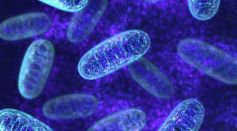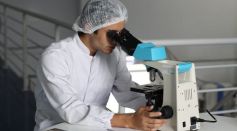Tags: Dna
Unique DNA in Owl Eyes Give Them Night Vision to Rule the Dark
Human Cells Look Younger Than Chimp's Despite Sharing 99% of Genetic Code
How a Public DNA Ancestry Website Helped Solve a 40-Year-Old Cold Case
Parabon Nanolabs Faces Controversy for Using Supposedly Private DNA Database to Identify Criminals
New Study Found DNA Inherited From Neanderthals Increases the Risk of Suffering Severe COVID-19
Scientists Explored the Use of 'Organoids' For a More Accurate Cancer Therapies to Treat Tumors
First-of-Its-Kind Antisense Drug May Become Novel Treatment for Fatty Liver Disease
Tel Aviv Researchers Unlock Genetic Mysteries of the 2,000 Year-old Dead Sea Scrolls

Study Shows Air Pollution Can Mess With Our DNA

Cellular Stress: Mitochondria Works As Early Warming Signal For Stressed Cellular DNA

A 5,700 Year Old Chewing Gum Helped Scientists Reconstruct Entire Genome of a Woman
Artificial DNA Can Help Control the Release of Drug Ingredients
European Bloodlines Are Not as “Pure” as You Might Think
DNA as Flash Drives: The Future of Storing Digital Image
25-Year-Old Shark Bite Mystery Solved by DNA from Tooth in Florida’s Man’s Foot
Scientists Unlock the Organizational Structure of DNA
Synthesizing Chemical-Sensing Cells from Scratch
A New Microscopy System for Imaging Cells from Inside
Scientists Developed a Rapid, Easy-to-Use DNA Amplification Method at 37°C
Breakthrough in the Discovery of DNA in Ancient Bones Buried in Water
Most Popular

The Strongest Tornadoes Ever Recorded: Scientific Breakdown of Extreme Tornado Events

Can Scientists Predict Earthquakes? The Latest Advances in Seismic Forecasting Explained

How Space Affects the Human Body: Key Health Challenges Impacting the Astronauts

Photosynthesis Made Easy: Light Reactions, Calvin Cycle, and Everyday Examples




